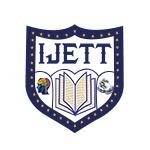A Prototype of Rekeying Method Using Recursive Map Theory
 |
International Journal of Engineering Trends and Technology (IJETT) |  |
| © 2014 by IJETT Journal | ||
| Volume-17 Number-6 |
||
| Year of Publication : 2014 | ||
| Authors : S.Sairam , M.satyanarayana |
Citation
S.Sairam , M.satyanarayana"A Prototype of Rekeying Method Using Recursive Map Theory", International Journal of Engineering Trends and Technology (IJETT), V17(6),256-261 Nov 2014. ISSN:2231-5381. www.ijettjournal.org. published by seventh sense research group
Abstract
Group key management is main part to ensure access control over the network for a group of users. The main issue is computation and communication complexity of this process. For this we introduced a group key management using map theory. We adopted Chebyshev map recursion theory to solve this. For above problems we stated which computation complexity means indefinite values in group key generation and which is not satisfying the association rules. To achieve this we extend the domain of Chebyshev maps from real number set to finite field.
References
[1] Sanjoy Paul. Multicasting on the Internet and Its Applications.Kluwer Academic Publishers, Norwell, MA, USA, 1998.
[2] M. Park, Y. Park, H. Jeong, and S. Seo. Secure multiple multicast services in wireless networks. Mobile Computing, IEEE Transaction, PP(99):1, 2012.
[3] H. Harney and C. Muckenhirn.Group key management protocol(gkmp) protocol specification, 1997.
[4] H. Harney and C. Muckenhirn.Group key management protocol(gkmp) architecture, 1997.
[5] Jack Snoeyink, SubhashSuri, and George Varghese.A lowerbound for multicast key distribution.Comput.Netw., 47(3):429–441, February 2005.
[6] Min-Ho Park, Young-Hoon Park, and Seung-Woo Seo. A cellbaseddecentralized key management scheme for secure multicastin mobile cellular networks. In Vehicular Technology Conference(VTC 2010-Spring), 2010 IEEE 71st, pages 1 –6, may 2010.
[7] Jen-Chiun Lin, Feipei Lai, and Hung-Chang Lee. Efficient group key management protocol with one-way key derivation. In Proceedings of the IEEE Conference on Local Computer Networks30th Anniversary, LCN ’05, pages 336–343, Washington, DC, USA,2005. IEEE Computer Society.
[8] Wen Tao Zhu. Optimizing the tree structure in secure multicast key management. Communications Letters, IEEE, 9(5):477 – 479,may 2005.
[9] Jun Sik Lee, JuHyung Son, Young Hoon Park, and Seung WooSeo. Optimal level-homogeneous tree structure for logical keyhierarchy.In Communication Systems Software and Middleware and Workshops, 2008.COMSWARE 2008. 3rd International Conference on, pages 677 –681, Jan. 2008.
[10] Chung Kei Wong, Mohamed Gouda, and Simon S. Lam. Secure group communications using key graphs. IEEE/ACM Trans. Netw.,8(1):16–30, February 2000.
[11] SandroRafaeli and David Hutchison.A survey of key management for secure group communication.ACMComput.Surv., 35(3):309–329, September 2003.
[12] Yan Sun, Wade Trappe, and K. J. R. Liu. A scalable multicast key management scheme for heterogeneous wireless networks.IEEE/ACM Trans. Netw., 12(4):653–666, August 2004.
[13] V. Kondratieva and Seung-Woo Seo. Optimized hash tree for authentication in sensor networks. Communications Letters, IEEE,11(2):149 –151, Feb. 2007. [14] R. Canetti, J. Garay, G. Itkis, D. Micciancio, M. Naor, andB.Pinkas. Multicast security: a taxonomy and some efficient constructions. In INFOCOM ’99.Eighteenth Annual Joint Conference of the IEEE Computer and Communications Societies.Proceedings.IEEE, volume 2, pages 708 –716 vol.2, mar 1999.

